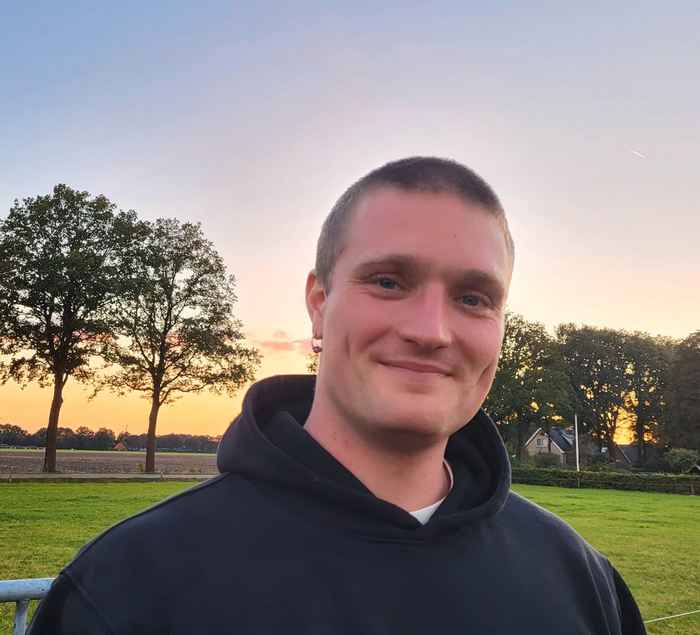PhD Mobility Scholarships Awarded
Three new PhD Mobility Programmes were awarded as a result of the 10th round in 2024.

Greta P. Grossman from the group of Marc T. M. Koper and Dennis G. H. Hetterscheid (UL), will visit Dr. Dušan Strmčnik at the National Institute of Chemistry, Ljubljana, Slovenia.
Visit: 3 months
The electrochemical double layer (EDL) is a layer of ions and oriented solvent molecules at the electrode surface, forming the environment for electrochemical reactions. Previous work in our group has shown that the currently accepted Gouy-Chapman-Stern (GCS) model for the EDL may be inaccurate even for simple electrochemical systems. A wider ongoing effort within our group aims to experimentally validate the structure of the EDL and to develop a model that accounts for a wide variety of experimental data.
My PhD project aims to understand the role of the solvent by measuring the EDL capacitance with solvents other than water, i.e. to vary the solvent parameter. To perform EDL capacitance measurements however, benchmark data in non-aqueous systems are very much needed. Although non-aqueous solvents are widely used in some areas of electrochemistry, there is still a lack of reproducible standard reference data. Such a dataset, in the form of cyclic voltammograms (CVs), forms the basis of fundamental electrochemical studies in aqueous solvents, serving as a benchmark for researchers to demonstrate cleanliness and good working procedures. During my visit to Dr Dusan Strmcnik’s lab at the National Institute of Chemistry (Ljubljana, Slovenia), I aim to fill this gap and begin to create such a standard for non-aqueous solvents.
Eventually, these data should generate benchmark CVs for well-defined, well-controlled gold-nonaqueous solvent interfaces, and should thereby give reliable insight into the molecular structure of these interfaces, and how to control these electrode-electrolyte structures. This will have substantial impact on diverse fields of electrochemistry, such as electrocatalysis, batteries, and organic electrosynthesis.

Sander van Lith from the group of Prof. dr. Katrien Keune and Dr. Joen Hermans (UvA), will visit Prof. dr. hab. Łukasz Bratasz at Jerzy Haber Institute of Catalysis and Surface Chemistry, Polish Academy of Sciences, Poland.
Visit: 5 weeks
Awarded by the John van Geuns Fund
The immense variation in mechanical properties of historical oil paints is still poorly understood. For example, we know that metal soaps can cause embrittlement, but the consequences of other pigments on the long-term mechanical behaviour is not understood in detail due to the complex relationship between chemistry and mechanics. Ultimately, understanding how each paint layer chemically evolves and how this evolution influences deformation under stress, is key to determine how a paint responds to changes in humidity and temperature and to select an optimal indoor storage environment for a painting.
First steps have already been made to study the mechanical behaviour of naturally aged oil paints. Old naturally aged reconstructions (> 31 years) were earlier tested on its mechanical properties as function of drying time. Unfortunately, little has been reported on the relationship between mechanical properties of old paints and its paint chemistry. Laboratory studies are common to study oil paint chemistry upon ageing. However, those oil paints are often exposed to high temperature and moisture in order to mimic old paints. This ageing protocol can yield different reactions and other stresses than naturally aged paints which makes extrapolation of those results to predict the long-term chemical changes of naturally aged oil paint uncertain.
During this research visit I have the unique opportunity to compare old naturally aged oil paint films with oil paint films which are prepared in the same way in our laboratory and exposed to high temperature and humidity. For those oil paints, I will study their chemical change during ageing using infrared spectroscopy and identify relevant chemical markers for oil paint degradation. In addition, I will determine stress-strain relationships and tensile properties of those paints. Overall, as an outcome, this research visit will contribute to a fundamental understanding of the relationship between paint composition and mechanical failure under certain circumstances, but also how degradation reactions can drive those failure mechanisms.

Pier W. Wessels from the group of Chris Slootweg (UvA), will visit Prof. dr. Tomislav Friščić at the University of Birmingham, England.
Visit: 3 months
The transition from fossil fuel-based energy systems to a hydrogen economy has been significantly impeded by insufficient storage capacity. Hydrogen gas exhibits low volumetric density, and its liquefaction demands substantial energy input. Moreover, safety considerations, transportation challenges, and boil-off losses hinder the widespread adoption of hydrogen as an energy storage medium. To address these limitations, various hydrogen storage methods have been proposed, with metal hydrides emerging as an alternative. Sodium borohydride (NaBH4) has been a promising candidate among these metal hydrides as it is safe, has a high hydrogen storage capacity and easily transportable. Regeneration of NaBH4 from the spent fuel is however a too cost and energy inefficient process, requiring sodium hydride, high pressure and temperature (Brown – Schlesinger Process).
In recent years, mechanochemistry free alternative to conventional chemical processes. Our initial research on NaBH₄ recycling has demonstrated that the regeneration of spent fuel can be achieved using ball milling under significantly milder conditions than the traditional Brown-Schlesinger process.
Prof. Tomislav Friščić has been a pioneer in this novel research field, publishing numerous articles on many different aspects of (green) mechanochemistry. The group has access to a great variety of ball milling machines, as well as novel mechanochemical apparatus, such as Resonant Acoustic Mixing (RAM) machines. The proposed collaboration will significantly accelerate our research on the regenerative process of NaBH₄, by leveraging the extensive experience and knowledge of Prof. Friščić’s group. Gaining hands-on experience with their advanced mechanochemical machines will enhance our research capabilities.